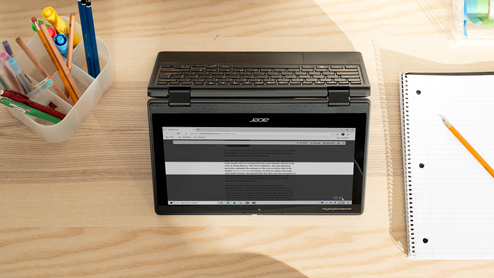Rules for using quotation marks
Quotation marks are punctuation marks used to signify a spoken or quoted phrase. More precisely, quotation marks are used to designate a direct quote—something that’s been said word for word.
- Example: He said, “I’m going to be a couple of minutes late to class today.”
When a sentence summarises another’s speech, quote or spoken dialect, also known as an indirect quote, quotation marks aren’t necessary.
- Example: He said that he was going to be a couple of minutes late to class today.
Quotation marks with full stops, commas and other punctuation
How do quotations work with commas and other punctuation? A comma is placed within the quotation marks to introduce a direct quote. If the description of the quote’s speaker is placed after the quotation, a comma is always placed within the quotation marks.
- Example: “I’m going to be a couple of minutes late to class today,” he said.
In British English grammar, commas and full stops should be placed outside the quotation marks except when they are part of the original quotation. This means that if a comma or full stop is not part of your quoted material, it should be placed outside of the quotation marks.
- Example: He asked, “Is it okay if I’m a couple of minutes late to class today?”
- Example: Does he always say, “I’m going to be late to class today”?
How capitalisation works with quotes
It can sometimes be tricky to remember when to capitalise words within quotation marks. To keep it straight, follow these two simple rules:
1. Always capitalise the first letter of a direct quote
The first letter in a quote should always be capitalised when quoting a full, complete sentence.
- Example: He said, “I’m running behind and I’m going to be late to class.”
2. Do not capitalise fragments
If a quote only references a fragment of a quote, a phrase, or part of a sentence, the first word of the quote does not need to be capitalised. This includes cases when a quote is interrupted by a description.
- Example: “I’m running behind,” he said, “and I’m going to be late to class.”
- Example: He’s always saying he’s “running behind” and so will be late.
Other uses for quotation marks
Quotation marks aren’t only used to capture spoken words. You might also run into, or want to use, these other uses of quotation marks:
Titles
While titles of longer works (e.g. full-length books, music albums, TV shows and films) and publications (e.g. newspapers, magazines and journals) are often written in italics, shorter pieces found within these longer works—like songs, poems, articles and chapters—are typically written in quotation marks.
- Example: Calvin thought that Purple Rain was Prince’s best album. However, “1999” was his favourite song.
Scare quotes
Also known as air quotes, sneer quotes, or shudder quotes, scare quotes are put around a word or phrase to note atypical usage or disapproval. Scare quotes are often used with a negative or sarcastic tone that distances the user from the quoted content to draw attention to something. In other words, scare quotes are the deliberate use of quotation marks when they are not grammatically necessary.
- Example: Calvin claims that only “real” Prince fans understand the brilliance of his earlier, less acclaimed work.
Single quotes
Single quotation marks are used to identify quotes inside of quotes.
- Example: “‘1999’ is my favourite song,” Calvin said.
All these uses and rules of quotation marks can be a lot to keep in your head while you’re writing. However, with practice, you can master this commonly confused aspect of grammar over time. Get up to speed on your quotation mark rules and other grammar rules by using a virtual writing assistant like Microsoft Editor to catch your grammatical mistakes.













